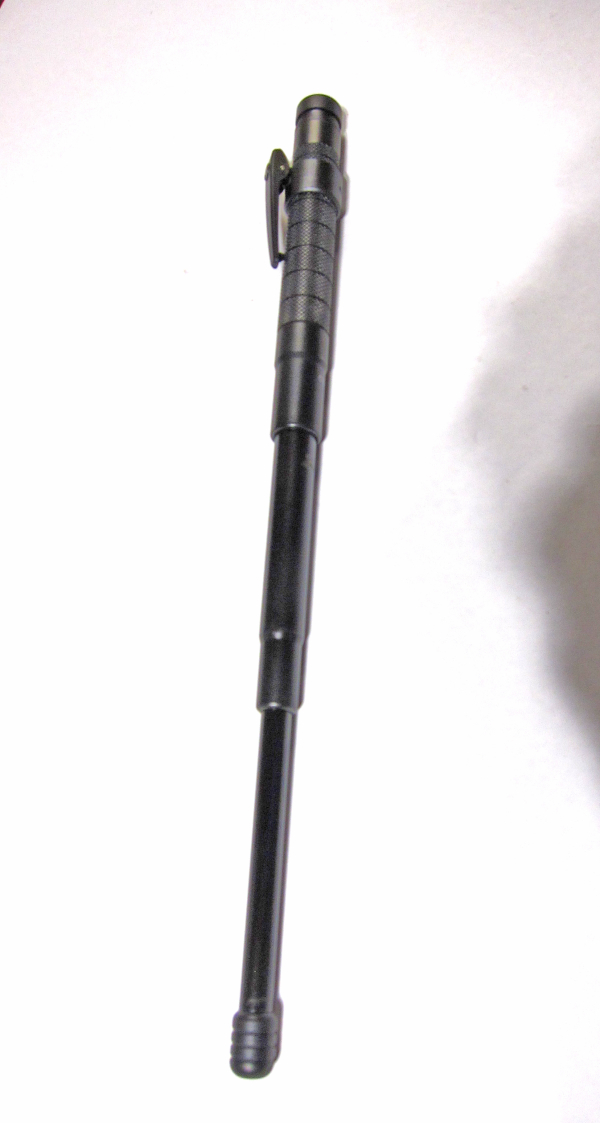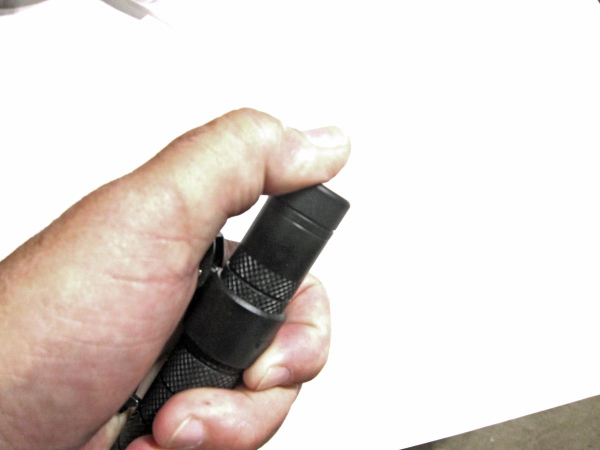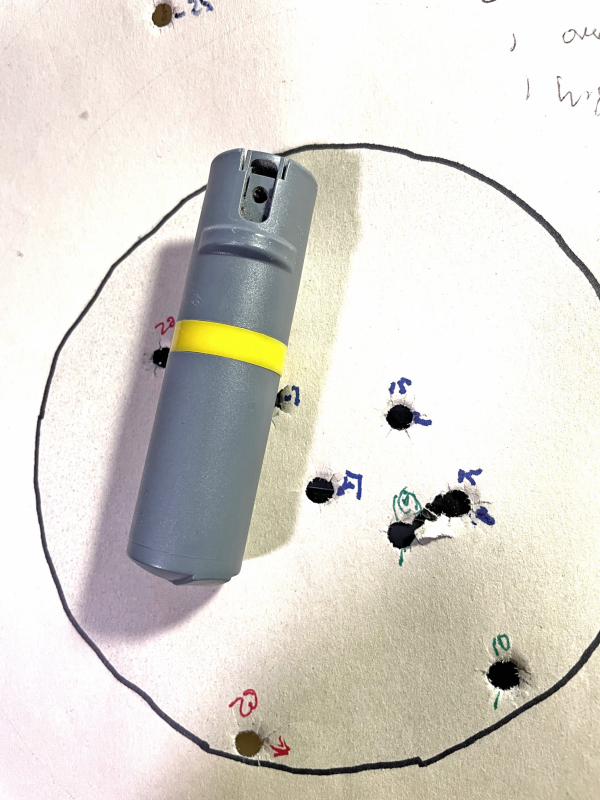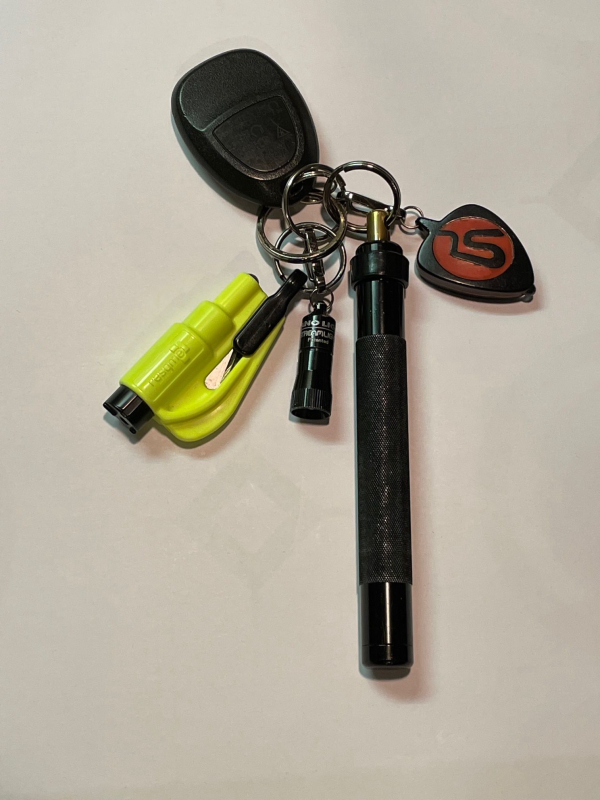A huge majority of potentially negative contacts can be simply avoided by careful, observant practitioners. Strangely, one of the things that seem to drive some people to look out for trouble is the state of being armed. Staying out of the potential conflict is good tactics.
Next to proactive avoidance is evasion / escape. Those concepts should be familiar. As well as looking for potential problems, you should always be seeking a way out. Know where the exits are – even those “closed” to outsiders. Be ready to use them. Always make an escape plan.
The most common contact resolutions (when avoidance, E&E didn’t work) consist of verbal interaction, movement to a position of advantage and nonlethal contact.
A lot’s made of “less lethal,” something that doesn’t exist in the various force statutes I’ve examined. There’s deadly force and force that’s not considered deadly. I’ll take a look at that marketing jive at another time.

What nonlethal options do you have? In general terms, there are personal weapons (hands, elbows, feet, knees, forehead), other contact weapons and remote-control devices. For personal weapons, I’d recommend you consult someone familiar with jiu-jitsu – for law enforcement practitioners, I strongly recommend the National Law Enforcement Training Center for instructor development.
As to contact weapons, there are striking devices and the so-called “drive stun” technique of the electronic discharge restraint (“Taser”). A negative aspect of personal weapons and impact weapons is the requirement to close with the offender. If you’re in a position to arrest, contact is obligatory. If you’re seeing to force a break in contact, moving in works contrary to your interests … unless you can’t avoid contact.
There are all kinds of concealment impact devices. My favorite from my younger days is the leather “sap.” Constructed of heavy leather, containing a flat slug of lead, and usually featuring a strap to go over your hand, these were often used (and nearly always used improperly) to force a cessation of hostilities. Obviously, strikes to the “brain housing group” constitute an act of deadly force. If homicide is not justified, a head strike is problematic.
So where to strike? An example is an offender grabbing your shirt front. Stabilizing his hand with your non-weapon hand and using the edge of the sap on the forearm or elbow often provokes an opening of the grasping hand. A strike at the point of the hip, using the edge on the sternum or on the clavicle can initiate a tactical withdrawal.
While saps are outstanding impact weapons, they have disadvantages. One is the perception that it’s for headstrikes only. The single time I used one on the street, it was to apply a light pop to another part of the body opposite of the skull.
Another is that they are single use; you only use them for strikes. Finally, they’re often illegal in states where it’s legal to carry concealed handguns.
That makes sense. It’s as if they want you to shoot every attacker.


What impact weapon has more uses than just striking? – A club.
It’s fashionable to refer to these as “batons.” If you consider them as only useful for strikes, you’re missing out on their true utility.
Some years back, we got the ASP Steel A40 Agent baton – a disc lock expandable stick -- from Armament Systems & Procedures. This expandable stick can be closed by a press on the tail cap. This means they’re locked open and the use of the “jab” as a defense technique is back on the table. It features a “Snap-Loc” clip to facilitate carry in the pocket, on the belt or inside the waist – something that should appeal to detective-types. The club is secured in the extended position via a flick of the baton, though I found that a surreptitious opening behind by back was easily accomplished without the fanfare of snapping it open (while a decent warning, it can be seen as escalation in the era of ‘de-escalation.’)
A press on the tail cap while pressing “in” on the 4140-steel striking tip closes the baton for storage. As one might expect, it’s easily used – when closed – as a “Kubotan” (yawara stick) for strikes, wrist drags, etc.
The grip has checkered bands between narrow grooves. Measuring at just under eight inches closed and just over 13 ounces in weight, the baton is right at 16” long deployed – extending your reach.
Like any device with moving parts, it requires maintenance, may need repair and definitely requires lubrication to the factory specification. As our people can’t carry other concealment size impact weapons (e.g., saps), this is certainly a good fit. In function (though not in design) it reminds me of the Monadnock Auto Lock baton I used to carry.
Like any baton, it can be used to reinforce joint locks. The use of clubs for grappling is well covered in training from Monadnock and from the book by “Judo Gene” LaBell, The Grappling Club Master.

What remote control weapons are available for nonlethal deployment? The two most commonly carried are aerosol subject restraints and electro-discharge devices. I will only cover the ASRs here.
The most common ASR in police service and for citizens’ defense is oleoresin capsicum – pepper irritant. It’s available in spray, stream and gel formulations. They each have some advantages and disadvantages.
The one I carry, as a retiree, is from POM. The POM Clip is a compact design that easily clips into any pocket. The clip can be moved for left or right-handed carry. It’s discreet and, more importantly, has a ‘flip-top’ design that is more resistant to accidental activation than the “rotating safety” designs by other makers. The high quality Sabre Red brand also has some flip-top units, like this one.
When it comes to pepper spray, I’m a duffer. Seek out competent training. The best I know for law enforcement and security comes from the NLETC, mentioned above. For nonsworn individuals, I’d look to our own Legendary Lawman Marshal Chuck Haggard for his OC class from Agile Training and Consulting.

My daily carry includes the ASP Key Defender loaded with 10% Oleoresin Capsicum (HEAT) attached to the ResQMe Keychain Rescue Tool (contains a spring loaded steel point glass breaker and a stainless steel blade for cutting through seatbelts) as well as a pair of small navigation lights (the NANO and the LOGO) from Streamlight. I also carry the POM Clip.
It’s very seldom a “gun kind of day.” Mostly we get by on staying out of trouble, followed by nonlethal conflict resolution. That’s a good thing, but we need to take advantage of nondeadly problem solving.
— Rich Grassi